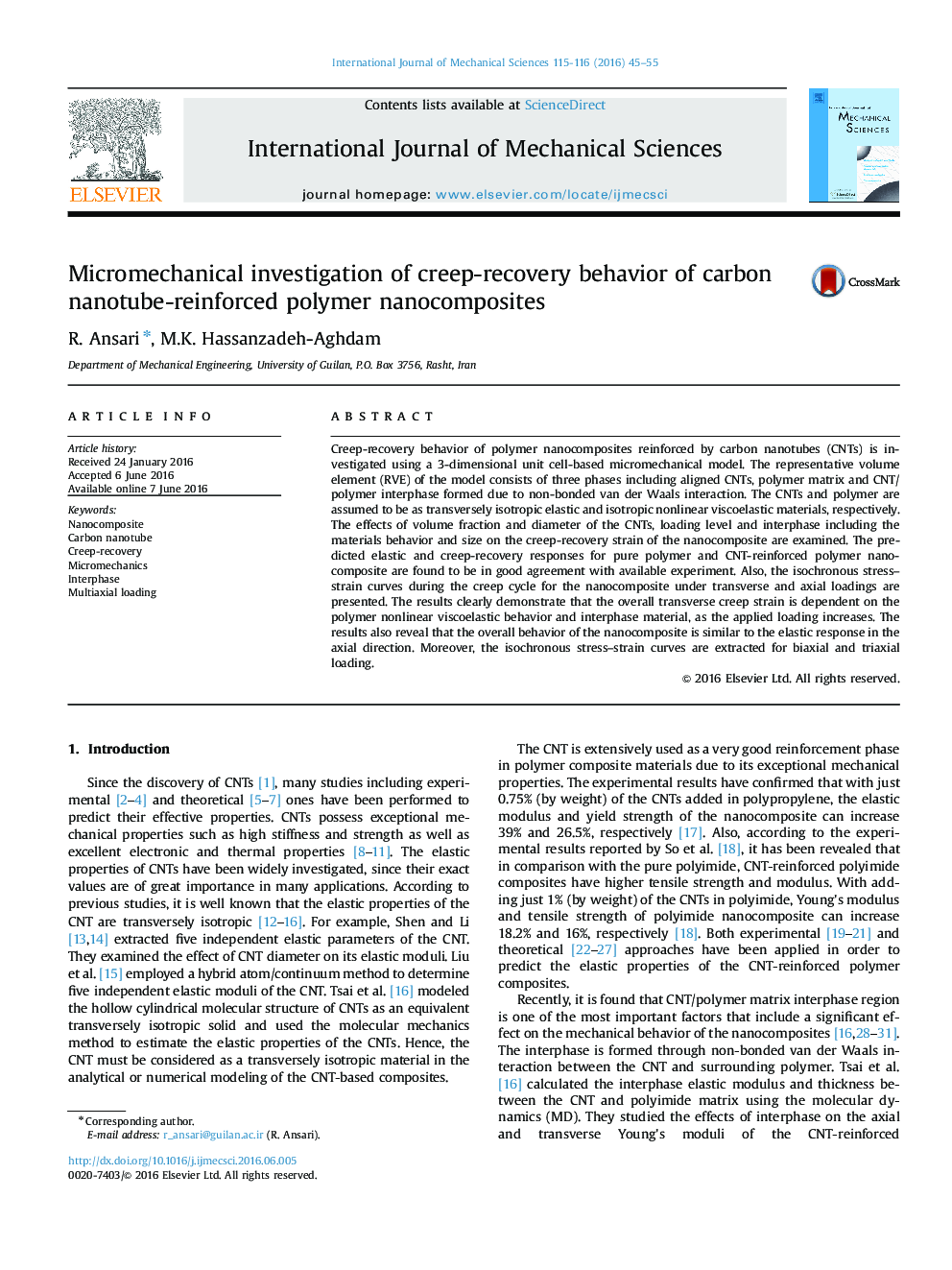| Article ID | Journal | Published Year | Pages | File Type |
|---|---|---|---|---|
| 779942 | International Journal of Mechanical Sciences | 2016 | 11 Pages |
•Creep-recovery behavior of CNT/polymer nanocomposites is studied using the unit cell method.•Transverse creep strain is dependent on the polymer and interphase properties.•Nanocomposite axial behavior is similar to that of elastic response.•Multiaxial isochronous stress-strain curves are extracted.
Creep-recovery behavior of polymer nanocomposites reinforced by carbon nanotubes (CNTs) is investigated using a 3-dimensional unit cell-based micromechanical model. The representative volume element (RVE) of the model consists of three phases including aligned CNTs, polymer matrix and CNT/polymer interphase formed due to non-bonded van der Waals interaction. The CNTs and polymer are assumed to be as transversely isotropic elastic and isotropic nonlinear viscoelastic materials, respectively. The effects of volume fraction and diameter of the CNTs, loading level and interphase including the materials behavior and size on the creep-recovery strain of the nanocomposite are examined. The predicted elastic and creep-recovery responses for pure polymer and CNT-reinforced polymer nanocomposite are found to be in good agreement with available experiment. Also, the isochronous stress–strain curves during the creep cycle for the nanocomposite under transverse and axial loadings are presented. The results clearly demonstrate that the overall transverse creep strain is dependent on the polymer nonlinear viscoelastic behavior and interphase material, as the applied loading increases. The results also reveal that the overall behavior of the nanocomposite is similar to the elastic response in the axial direction. Moreover, the isochronous stress–strain curves are extracted for biaxial and triaxial loading.
Graphical abstractIsochronous stress–strain curves of the CNT/PMMA nanocomposite under (a) transverse and (b) axial direction. Stress–transverse strain curves of the CNT/PMMA nanocomposite under multiaxial loadingFigure optionsDownload full-size imageDownload as PowerPoint slide
